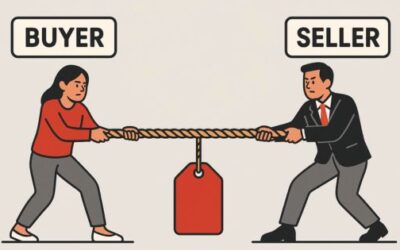Every sales methodology should influence CAC, win rates, deal size, and sales cycle length. For CROs choosing a system in 2025, the evaluation should start with one question: does this method support the outcomes the business expects me to deliver?
This article compares Gap Selling and Miller Heiman’s Strategic Selling® across five core revenue metrics. It breaks down how each method shapes rep behavior and execution quality, so you can evaluate which one drives the results your team is expected to deliver.
What Problems Are We Trying to Solve?
Sales methodologies exist to address specific execution gaps. To choose the right one, you need a clear view of where your team is struggling today.
If opportunities stall before a clear problem is uncovered, that points to one kind of issue. If deals fade after internal handoffs, that signals another. Poor qualification, weak access, inconsistent discovery, each of these symptoms reflects a different kind of breakdown.
A well-matched methodology reinforces what your team needs most. Some teams benefit from better buyer alignment. Others need structure to manage complex decision paths. Few organizations need equal support on both fronts.
Before applying a method, you need to understand on where execution is failing.
Effect on Customer Acquisition Cost (CAC)
CAC measures how much you spend to generate each dollar of new revenue. It reflects the quality of your qualification process, the efficiency of your sales cycle, and how well your team prioritizes the right opportunities.
Gap Selling helps control CAC by enforcing a clear entry point: reps pursue deals only after confirming that a specific, urgent business problem exists. This reduces time spent on accounts that are unlikely to close or lack a compelling reason to act.
Miller Heiman encourages early engagement with multiple stakeholders. In accounts where influence mapping is essential, this can lead to stronger access. But without a clear problem to anchor urgency, the extra effort can inflate pursuit costs and stretch cycles.
As an Influence on Win Rate
Methodology shapes how reps qualify, diagnose, and position value. When those actions reflect the buyer’s priorities, conversion rates improve.
Gap Selling trains reps to identify specific business problems, measure their impact, and tie solutions directly to defined outcomes. This approach gives buyers a concrete reason to act and reduces uncertainty during the decision process.
Miller Heiman equips reps to manage complex stakeholder dynamics. It provides a structure for mapping influence, planning engagement, and navigating internal decision paths. In deals with multiple buying roles, this can help maintain progress and prevent last-minute surprises.
Both aim to increase win rates, but through different levers: one by aligning around business outcomes, the other by coordinating internal politics.
Effect on Sales Cycle Length
Gap Selling helps shorten cycles by focusing early conversations on business problems with measurable impact. Reps are trained to establish urgency based on what’s broken and what it costs to wait. When that urgency is tied to data, decisions tend to happen faster.
Miller Heiman emphasizes stakeholder alignment. Reps work to build consensus and navigate internal influence across the account. In environments where that process is slow or unclear, momentum often stalls while approvals are worked out.
Methodology either accelerates action or delays it, depending on how well it supports buyer decision-making in the early stages.
Influence on Average Contract Value (ACV)
ACV growth depends on how well reps uncover the full scope of buyer needs. Methodology plays a role by shaping what sellers look for and how they expand the conversation.
Gap Selling increases ACV by teaching reps to identify related problems beyond the immediate issue. This process surfaces additional use cases, departments, or workflows affected by the same root cause. When sellers build a broader business case tied to quantifiable outcomes, deal size increases without padding the scope.
Miller Heiman expands deal size by helping reps gain access across the organization. The methodology emphasizes building relationships with multiple stakeholders, which can lead to cross-functional alignment and incremental growth. Success here depends on the rep’s ability to navigate influence and secure buy-in at multiple levels.
Both approaches support ACV growth, but through different levers: diagnostic depth versus political access.
How A Methodology Affects Quota Attainment
Gap Selling supports attainment by making execution more uniform. Reps are trained to qualify based on relevance to business outcomes. When sellers use the same process to prioritize and advance deals, productivity improves and performance becomes more predictable.
Miller Heiman gives structure for managing politically complex accounts. Reps learn to map influence and plan multi-threaded engagement. The framework can help in long-cycle environments, but results often depend on how well each seller adapts it to the account.
Quota attainment improves when methodology drives consistent execution across the team.
Final Thoughts
Both methodologies have their strengths. Miller Heiman is highly structured and works well in large enterprise environments where long, politically complex sales are the norm. However, its effectiveness relies heavily on the rep’s ability to gain access and maintain influence, often without deep guidance on uncovering buyer urgency or business impact.
Gap Selling, by contrast, is oriented around diagnosing buyer problems, quantifying their impact, and aligning the solution to a measurable gap between the current and future state. For CROs focused on performance levers like CAC, win rate, sales velocity, ACV, and quota, this structure offers more predictable improvement across teams.
Ultimately, the better choice depends on your sales motion. If the challenges are tied to conversion efficiency, pipeline velocity, and rep productivity, the data and alignment lean toward a problem-centric model like Gap Selling.



0 Comments